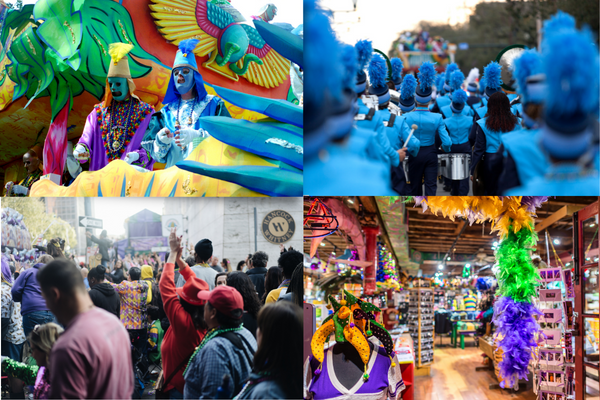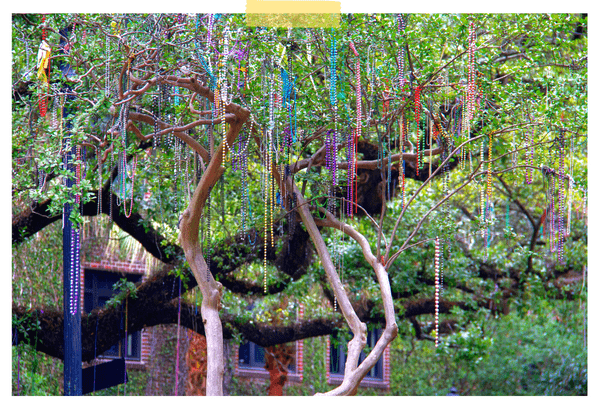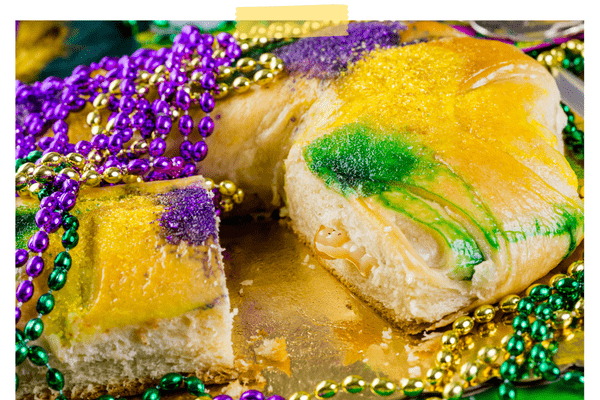

Do you like crazy parades? Then come to New Orleans in February for the annual Mardi Gras celebrations! We'll show you all the traditions of Carnival and Mardi Gras in the USA.
Mardi Gras is the name given to what is known as "Fat Tuesday," which is celebrated in the USA, especially in Catholic New Orleans, but also in other parts of Louisiana and Mobile (Alabama).
The last day of the carnival before Ash Wednesday traditionally marks the beginning of Lent after seven "fat days" with their Mardi Gras celebrations, parades, balls, picnics, and feasts.
Fat Tuesday falls on a different day each year because the start of Lent depends on the Easter holidays. In 2023, Mardi Gras will be celebrated on February 21st.
The best time to visit New Orleans around Mardi Gras is the weekend before Fat Tuesday, as two of the biggest parades of the season take place on those days.
If you have a little more time, be sure to stay longer and also experience the big parades and festivals on Lundi Gras (Monday) and the Tuesday costume and mask spectacle in the streets of the French Quarter.
On Mardi Gras, numerous mad parades take place with colorfully decorated floats, costumes, and lots of music and dancing. Participants and spectators dress in the traditional Mardi Gras colors of gold, green, and purple.

In New Orleans, you can easily watch the Mardi Gras parades from the following locations:
A tip for those who don't like crowds: Don't stay in the French Quarter after the parades, because it gets crowded there!
However, you don't even have to stay in New Orleans because many other places in Louisiana have great parades during Mardi Gras. Check out Shreveport, Lafayette, Eunice, Baton Rouge, or Houma!
Want to go to Louisiana for Mardi Gras? Get the best flight deal and the perfect accommodation here!
If you're attending a Mardi Gras parade for the first time, you'll be amazed at the tons of bead chains in colors of gold, green, and purple flying through the air.
The tradition of flying Mardi Gras bead necklaces is said to have been established in the 1870s when a parade participant in a Santa Claus costume first threw beads into the crowd as gifts.
The audience was so pleased with the shiny presents that, gradually, all competing Mardi Gras associations (the so-called "Krewes") decided to throw pearl necklaces into the crowd in the future.

During a Mardi Gras parade, not only strings of beads are thrown into the audience. The famous "Throws" include coins, cups, toys, masks, prank items, coconuts, and jewelry.
According to official estimates, more than 11 million kilograms of Mardi Gras items fly off the floats each year.
As with all holidays in the United States, Mardi Gras has long-established traditions. Most of them originated as early as the 19th century.
The colors purple, gold, and green were chosen as the official Mardi Gras colors in 1872. Since then, all participants of the Mardi Gras parades dress in these colors, and all "Throws" have to correspond to the color scheme.
The meaning of the colors: purple is supposed to stand for justice, gold for strength and power, and green for faith and trust.
A Mardi Gras celebration isn't complete without trying the traditional King Cake. The legendary treat is made of yeast dough and topped with fruit or filled with a creamy mixture, depending on the regional recipe.
You can easily recognize the King Cake by its sprinkling or painting in the carnival colors of green, purple, and gold. Be a little careful when eating, though, because sometimes, toys are baked in. If you catch one, you're "King for a day."

The shiny green, purple, and gold beaded necklaces are not thrown from the floats with a complete lack of concept. Tradition has it that the colors are meant to be assigned to recipients. So, for example, anyone who seems particularly trustworthy gets a green necklace thrown at them.
As soon as it gets dark in the streets of New Orleans on Mardi Gras, the mythical torchbearers parade through the streets. What began as a typical torchlight procession in memory of former slaves is now an established show act with outstanding juggling and dancing.
The traditional costume at Mardi Gras always starts with a mask. It can cover only the eyes or the whole face of the wearer and is best designed in the carnival colors of green, gold, and purple.
A Krewe is a carnival society that organizes or participates in a Mardi Gras parade. Every year, the Krewes' self-selected themes, including floats and costumes, are a secret. They are only revealed at the start of the parades.
In New Orleans, Baton Rouge, and some other places in Louisiana, there are dog parades at Mardi Gras. The four-legged friends are dressed up in gold, purple, and green costumes and put on miniature rolling floats.
Yes, this looks cute. However, we bet your dog would show you the middle paw if you suggested this idea.
Mardi Gras and Catholic Lenten customs came to the United States with the French settlers who founded New Orleans. They named the outlet of the Mississippi River where they camped on Monday, March 2nd, 1699, "Point du Mardi Gras" ("Point of Fat Tuesday") the following morning.
In 1703, homesick settlers and soldiers in Louisiana celebrated Mardi Gras for the first time. As early as 1704, the first Mardi Gras association, the Mystic Society, was founded, and by 1710 there was already a small parade.
Under the French occupation, masks and costumes came into fashion on Mardi Gras but were banned again by the Spanish. It wasn't until New Orleans became a member of the United States in 1803 that Mardi Gras masks were allowed to be worn in public again
Have you acquired a taste for the festive season and want to learn even more about holiday traditions in the USA? Then you'll have fun with our articles on Halloween, Thanksgiving, and Christmas!
Win one of 55,000 Green Cards in the official Green Card Lottery of the US authorities!